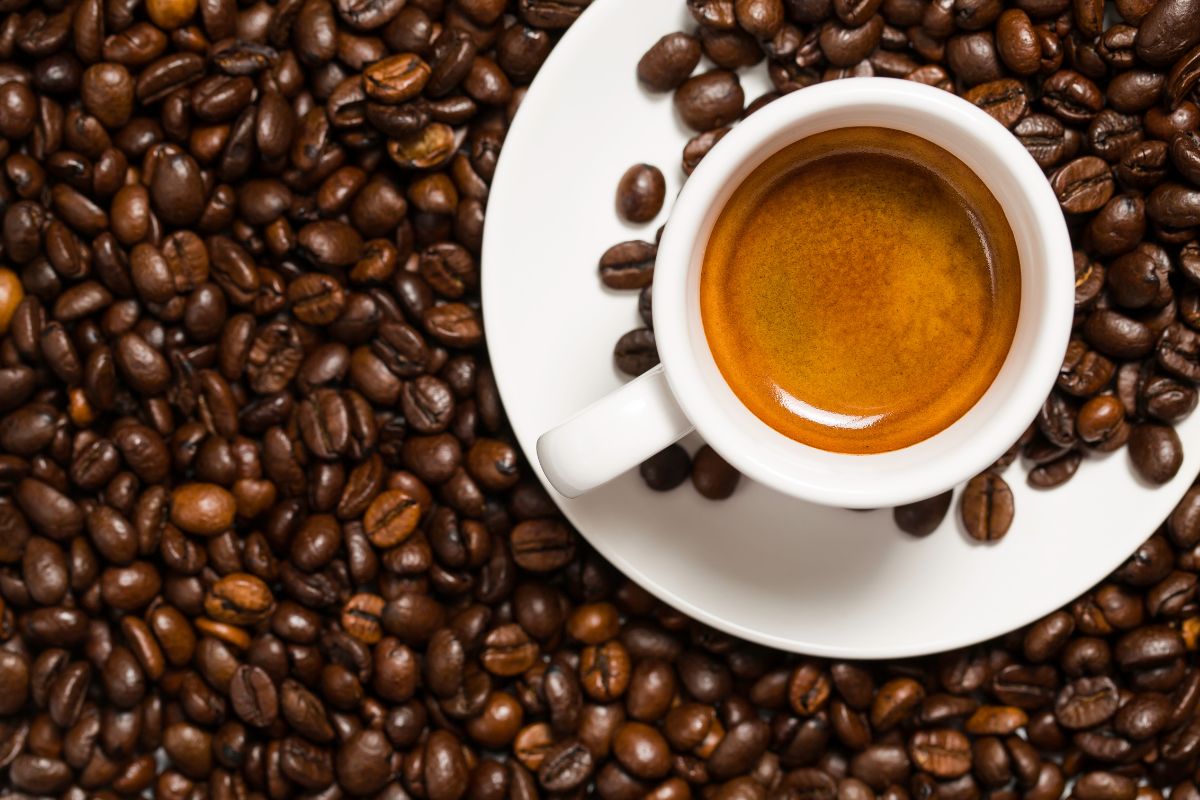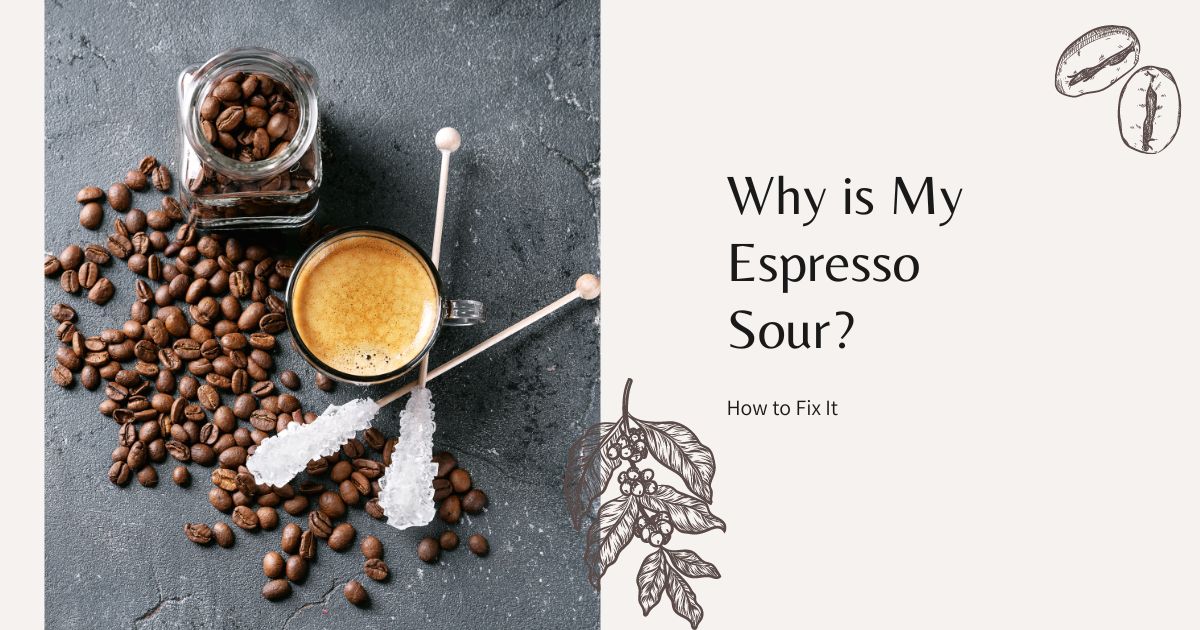Discover the mystery of why is my espresso sour. Catch our expert insights and learn more. Read now to unveil!
Why is My Espresso Sour?
Sour espresso often results from under-extraction. When coffee grounds are brewed too quickly, acidic compounds dominate, leading to a rancid taste. Experimenting with grind size, water temperature, and brewing time can mitigate this issue.

What Is Sour Espresso?
Crema
The crema is the golden foam layer on top of a freshly pulled espresso shot. When an espresso tastes sour, the crema may appear thin or lacking, often signifying under-extraction. A sour espresso shot might result from a quick water flow through the coffee grounds, leading to an extraction that emphasizes the acidic compounds.
Flavor
The flavor of sour espresso is characterized by a pronounced acidity that overshadows other taste elements. This sensation of espresso being too acidic can be displeasing and unbalanced. Often, it’s a result of using too coarse a grind or too low a water temperature. Adjusting these elements can transform a sour espresso shot into a harmonious and enjoyable experience.
Puck
The puck, or the compressed coffee grounds in the portafilter, plays a significant role in whether an espresso tastes sour. An uneven puck can lead to water channeling through the grounds unevenly, quickly extracting the acidic compounds and making the espresso too acidic. Proper tamping and distribution techniques can ensure a more balanced extraction, mitigating the sour taste.
In summary, sour espresso is a complex issue stemming from various factors in the extraction process. By understanding and controlling the crema, flavor, and puck, one can avoid or correct a sour espresso, leading to a more satisfying coffee experience.
Is Espresso Supposed to Taste Sour?
No, an espresso sour taste is typically not desired. Adjusting grind size, water temperature, and brewing time can lead to a well-balanced espresso without sourness. Proper extraction yields a rich flavor with natural sweetness and complexity, making the experience enjoyable.
Why is My Espresso Bitter?
Bitter espresso can result from over-extraction, where too many compounds are pulled from the coffee grounds, including undesirable bitter ones. This can happen with a grind that is too fine or a brewing time that is too long. Balancing these factors can help in achieving a smoother and less bitter taste.

Sour vs. Bitter Espresso
Sour Espresso
- What It Looks Like: Sour espresso often appears under-extracted and may lack depth in color.
- Five Best Fixes: Adjust grind size, increase brewing time, use fresh beans, maintain the proper water temperature, and calibrate the machine.
- Best Bean and Grind Sizes: Fresh medium roast beans, coarser grind size.
- Ideal Coffee to Bean Ratio: A 1:2 ratio of 634 oz coffee to 1.21 fl oz water (18g coffee to 36ml water) usually prevents sourness.
- Ideal Water Temperature: 195-205°F (90-96°C).
- Puck Preparation: Even tamping and distribution prevent uneven extraction, which can lead to sourness.
Bitter Espresso
- What It Looks Like: A question often asked, “Is espresso bitter?” It might be over-extracted, leading to a harsh and unpleasant taste.
- Five Best Fixes: Adjust to a coarser grind, decrease brewing time, use fresh beans, correct water temperature, and regular machine maintenance.
- Best Bean and Grind Sizes: Freshly roasted beans, not too dark, with a medium grind.
- Ideal Coffee to Bean Ratio: A 1:2 ratio of 634 oz coffee to 1.21 fl oz (18g coffee to 36g water) helps avoid bitterness.
- Ideal Water Temperature: 195-205°F (90-96°C), just like sour espresso.
- Puck Preparation: Uniform tamping and distribution to ensure even extraction.
In conclusion, understanding why my espresso is sour? And Is espresso supposed to be bitter requires recognizing the differences between sour vs. bitter espresso. These nuances in preparation and extraction make a significant difference in the taste profile of your espresso.
Why Does Espresso Taste Burnt?
Espresso may taste burnt due to over-roasting coffee beans or using water that’s too hot during brewing. It could also result from over-extraction, which pulls excessive bitter compounds into the cup. Proper roasting, grinding, and brewing techniques can prevent this burnt flavor and ensure a pleasant espresso experience.
Our Top Espresso Extraction Tips
Figuring out how to fix sour espresso can enhance your coffee experience. Here are some top espresso extraction tips:
- Grind Size: Using a coarser grind allows water to flow more evenly, reducing acidity.
- Water Temperature: Opt for 195-205°F (90-96°C). Cooler water extracts fewer acidic compounds.
- Brewing Time: Increase the brew time to extract more sweet and balanced flavors.
- Fresh Beans: Use freshly roasted beans for optimal flavor. Stale beans can create sour notes.
- Machine Calibration: Regularly calibrate and clean your espresso machine to ensure consistent extraction.
By carefully managing these factors, you can transform a sour espresso into a balanced and delightful cup.
How A Dirty Espresso Machine Contributes to Sour Espresso
When discussing what sour espresso means, we refer to a taste characterized by pronounced acidity. Several factors can cause this taste, including a dirty espresso machine. Here’s how:
Residue Build-up
Over time, coffee residue accumulates in various parts of the espresso machine, including the shower screen, group head, and portafilter. This residue can affect water flow, leading to uneven extraction. This imbalance in extraction emphasizes acidic compounds, which answers the question of what makes espresso sour.
Inconsistent Water Temperature
Mineral build-up inside the machine can affect its ability to heat water consistently. Because water temperature is a vital factor in flavor extraction, fluctuations can contribute to sour espresso.
Impact on Grinding
A machine’s dirty grinder or grinder part can result in inconsistent grind sizes. This inconsistency leads to uneven extraction, again tipping the balance towards the sour flavors.
Contamination
Old coffee oils and residue can spoil and contaminate new coffee shots. This contamination doesn’t just create a sour taste but also an unpleasant rancid flavor.
Recommendations
- Regular Cleaning: Daily and weekly cleaning routines can prevent residue build-up.
- Descaling: Regular descaling ensures consistent water temperature and flow.
- Professional Maintenance: Regular service by an experienced technician keeps the machine in optimal condition.

The Final Say
Understanding why my espresso is sour is a journey through the complex world of coffee extraction. From the grind size, water temperature, brewing time to the cleanliness of the machine, each aspect plays a role in determining whether your espresso will end up sour.
Understanding how to fix under-extracted espresso is critical for those encountering a sour taste. Adjusting the grind to be slightly finer, increasing the brewing time, and ensuring the water temperature is within the ideal range can mitigate this issue.
Conversely, if bitterness is the problem, knowing how to fix over-extracted espresso will help. Here, making the grind slightly coarser, decreasing the brewing time, and again monitoring the water temperature can bring the flavors back into balance.
In the fascinating world of espresso, achieving the perfect shot may seem like an art form, but it’s deeply rooted in science. By knowing what causes sourness and how to fix it, whether under-extracted or over-extracted, you can master the art of espresso and enjoy a cup that’s rich, balanced, and satisfying every time.
The path from a sour espresso to a perfect shot is filled with learning, experimentation, and, above all, a deep appreciation for the craft of coffee.

